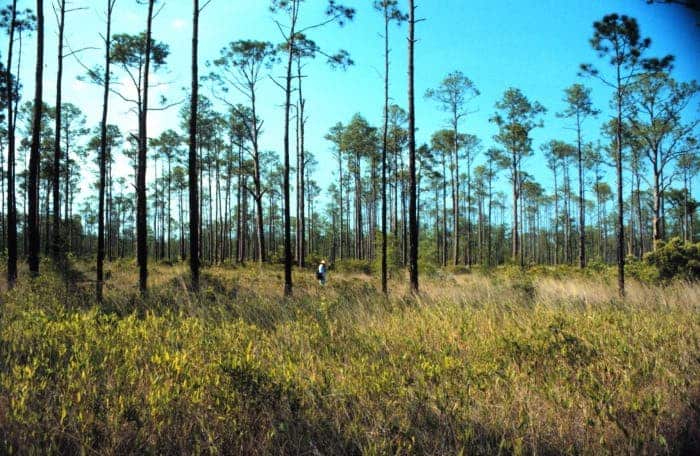
A pine savannah, like what used to commonly exist in Missouri before fire suppression became commonplace. Image: NOAA
Millions of acres of pine woodlands used to cover a large portion of the Midwest but as humans logged these trees and suppressed natural fires, dense forests with thick leaf litter and tree species that were less fire-resistant took their place–leading to more intense and unpredictable wildfires as well as the loss of native bird habitats. However, a new study from the University of Missouri has shown that restoring these woodlands through strategic tree thinning as well as managed fires can allow a diverse array of birds–some of them threatened species–to return in striking numbers.
Burning Forests is a Good Thing? As Melissa Roach, now a researcher with the U.S. Geological Survey’s Bird Banding Lab who carried out the study while completing her master’s degree at MU explained, “Some people might hear the words ‘fire’ and ‘thinning’ and immediately imagine charred, flattened wastelands, but that isn’t the reality. Researchers are using these management techniques to restore beautiful open woodlands. In this study, we found that birds that have been struggling elsewhere are positively thriving in these restored areas.”
How it Works: Restoring forests using fire and tree-thinning leaves large, widely-spaced trees for canopy-nesting species while allowing the development of grasses and shrubs for ground or shrub-nesting species. These restored woodlands can meet the habitat needs of many more species, as they were intended to do before human interference.
Why This Matters: About one-third of the state of Missouri is covered by forests, including spectacular oak, walnut, pine, and red cedar. Preserving these forests is critical to allowing the native plants and animals that rely on these ecosystems to coexist and thrive. The results of this study can also help landowners make more informed decisions about managing their land and protecting the 730 native species that call Missouri home.


